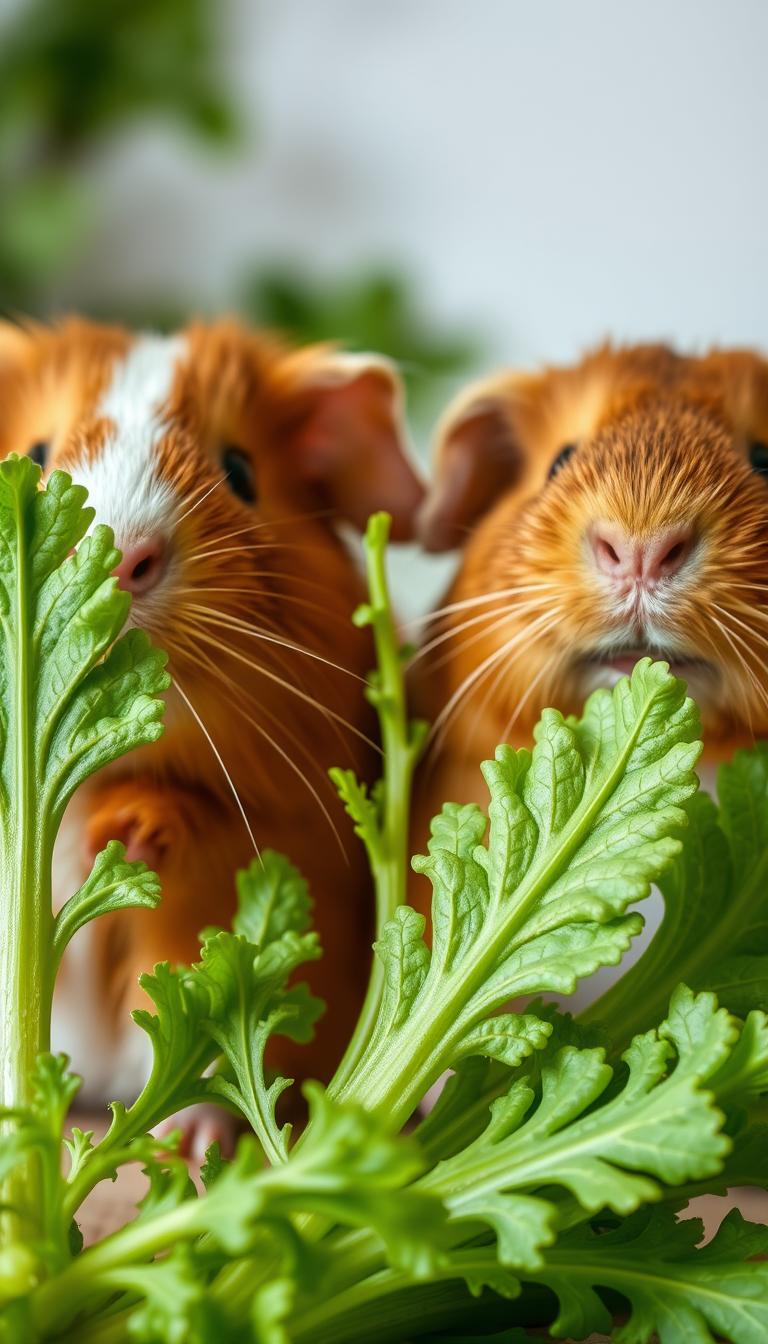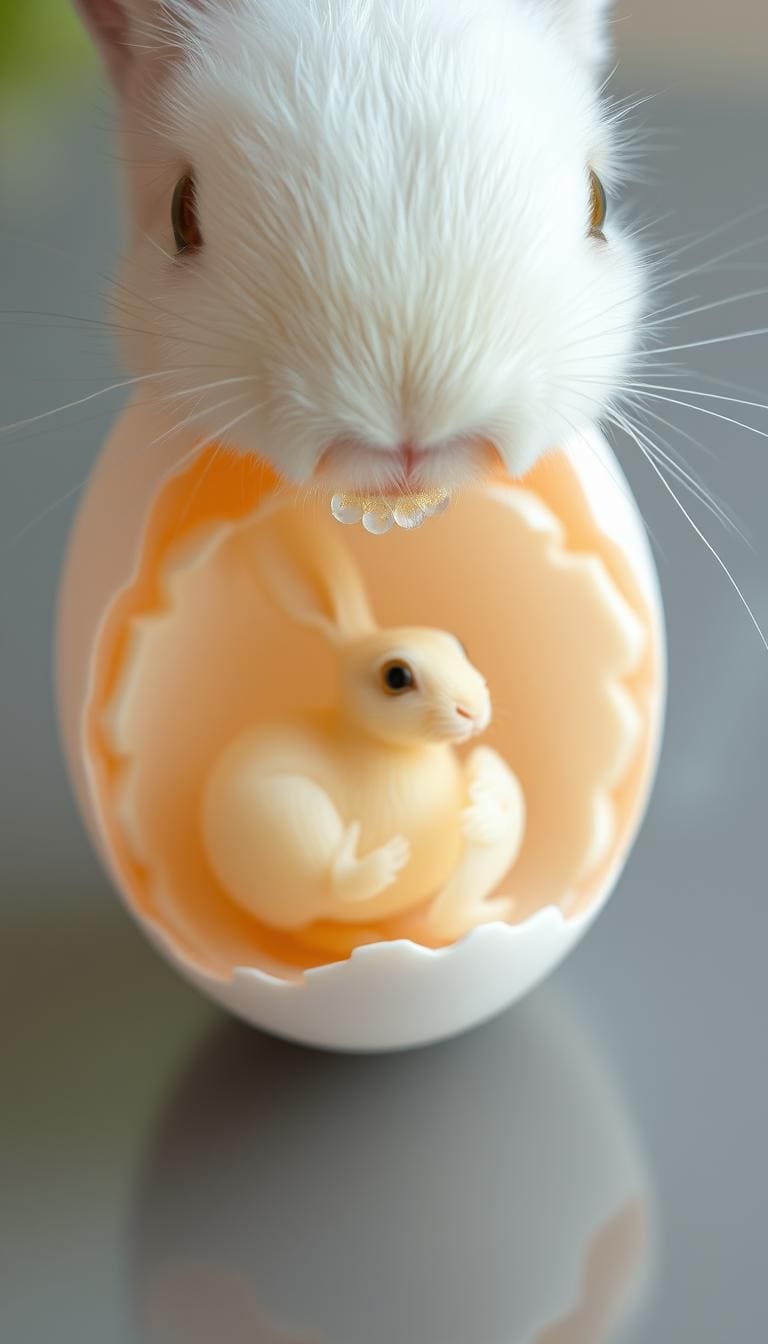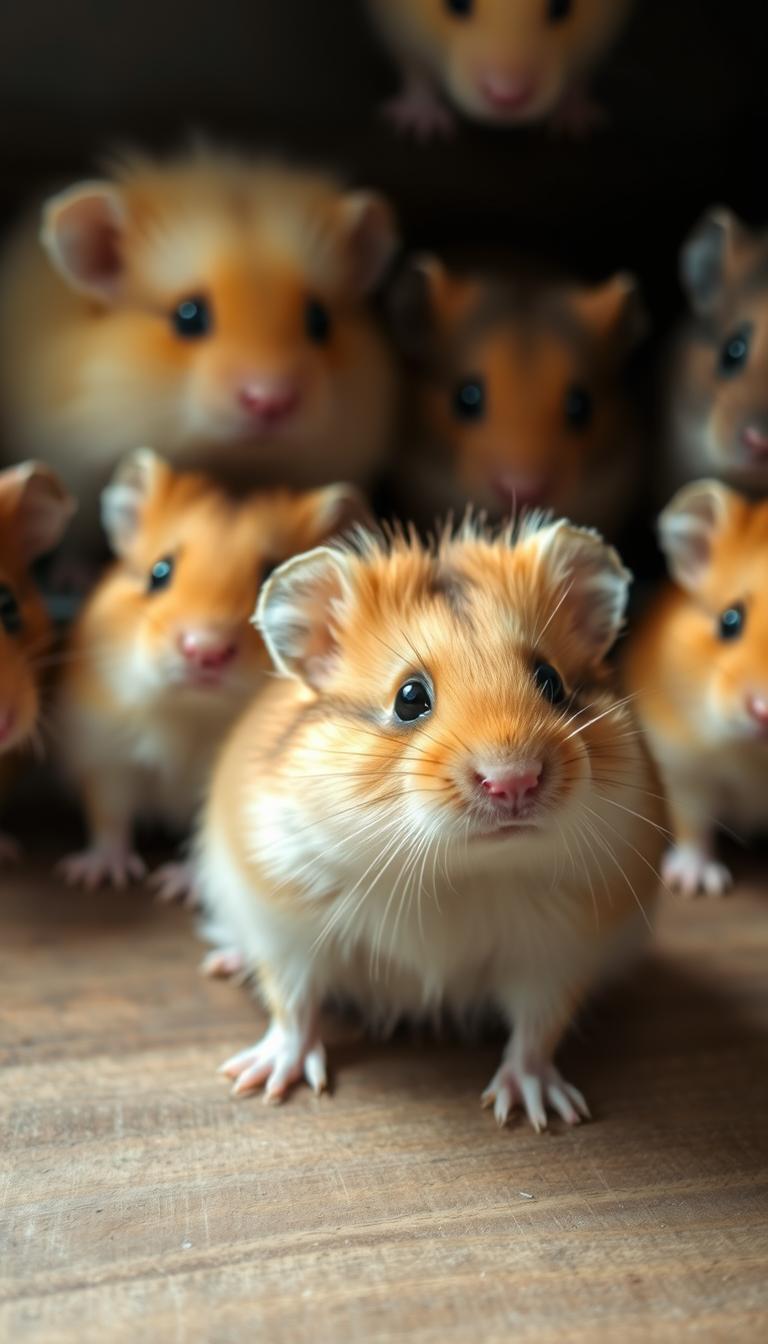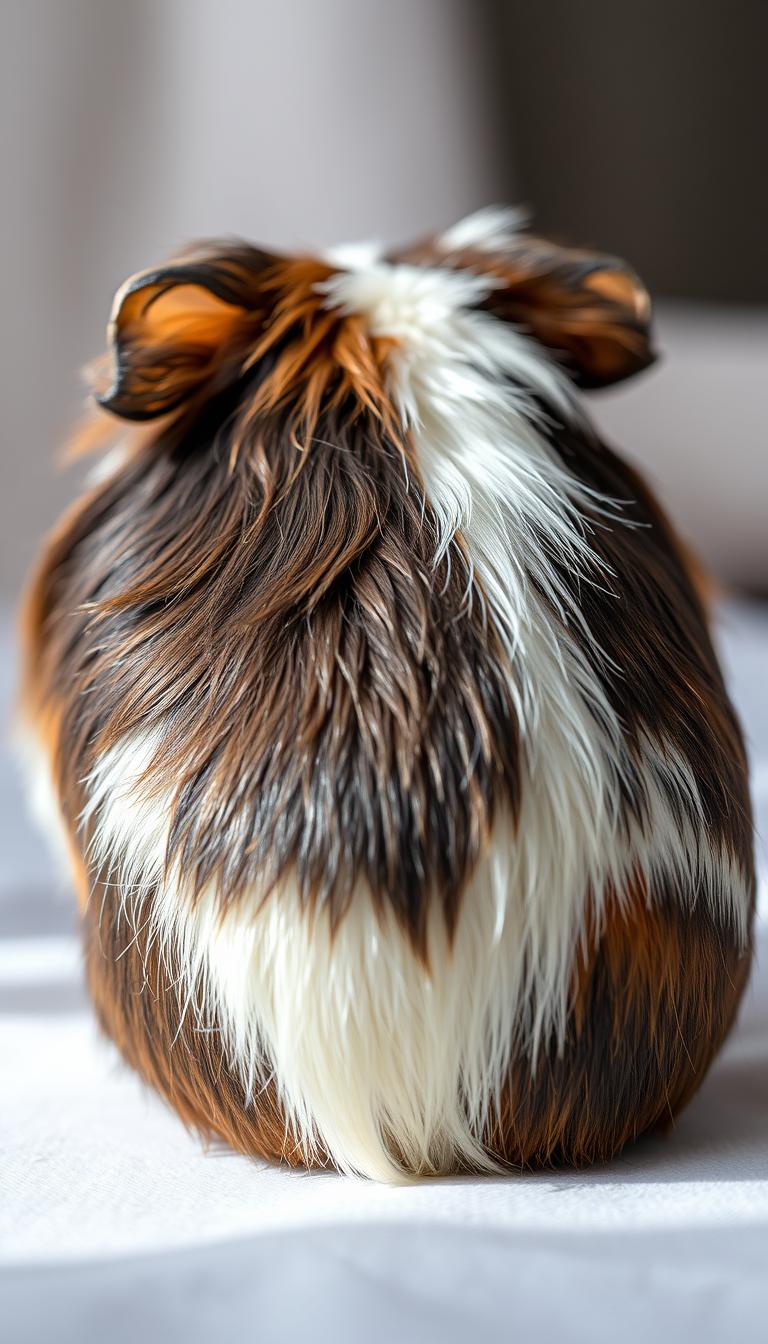Many pet owners wonder about adding variety to their furry friend’s meals. Fresh greens like celery leaves can be a crunchy, low-calorie option when prepared properly. These leafy parts offer vitamins A, C, and K, which support immune health and bone strength—essential for active small animals.
While the entire celery plant is non-toxic, moderation is key. The high water content means too much could lead to digestive upset. Experts recommend washing leaves thoroughly and chopping them into bite-sized pieces to prevent choking. For detailed nutritional guidance, trusted resources break down portion sizes and frequency.
Introduce new foods slowly to monitor reactions. Pair celery leaves with timothy hay and vitamin C-rich veggies for balanced nutrition. Always remove uneaten portions within a few hours to keep feeding areas fresh.
Looking for more tips? Reputable guides like Hutch & Cage explain safe snacking practices. Remember—treats should complement, not replace, a diet focused on hay and fortified pellets.
Table of Contents
Understanding Celery and Its Role in a Guinea Pig’s Diet
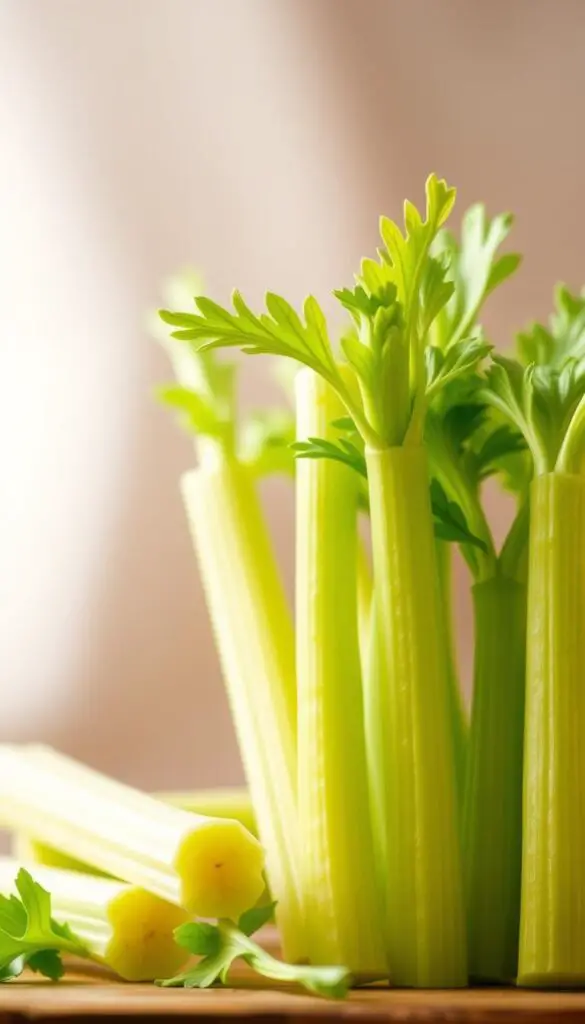
When planning meals for your small companion, knowing which veggies pack the biggest nutritional punch matters most. Celery stands out as a crunchy, vitamin-rich option that supports their unique dietary needs while adding excitement to their plate.
Celery’s Nutritional Profile
This green veggie delivers three essential nutrients: vitamin A for healthy eyesight, vitamin C to prevent scurvy, and vitamin K for strong bones. Unlike humans, these pets can’t produce their own vitamin C—a single stalk provides about 3% of their daily requirement. The natural fiber aids digestion, while the high water content helps maintain hydration.
The Importance of Fresh Vegetables
Leafy greens should make up roughly 15% of your pet’s daily food intake, paired with unlimited hay. Rotating celery with other veggies like bell peppers or cilantro ensures balanced nutrition. “Variety prevents boredom and nutrient gaps,” notes a small-animal nutritionist. Always serve raw celery—cooking destroys vital nutrients they need.
Remember to chop stems into pea-sized pieces to avoid choking. Combine this veggie with calcium-low options to maintain urinary health. A colorful mix keeps meals engaging while meeting their specific dietary requirements.
Can Guinea Pigs Eat Celery Leaves?
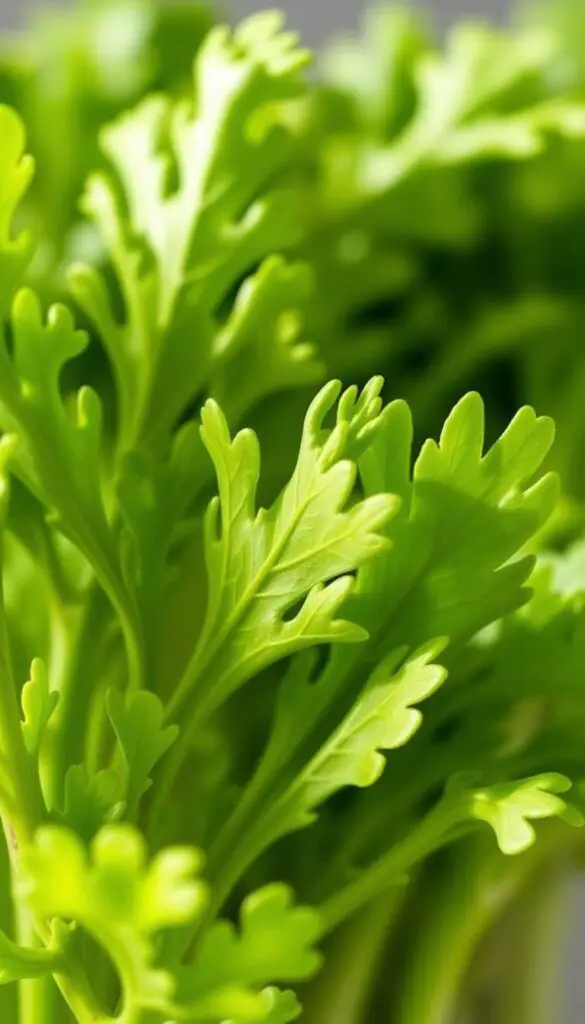
Exploring new treats for your pocket pet? Those vibrant green tops from celery stalks often get discarded, but they’re actually a nutritional powerhouse. Unlike tougher vegetable parts, these tender greens offer concentrated benefits perfect for small herbivores.
Leafy Treasures vs. Stalks
The feathery foliage contains 40% more vitamin C than celery stems, crucial for preventing scurvy. Younger animals particularly benefit from the softer texture, which reduces chewing effort while delivering essential nutrients.
| Feature | Leaves | Stalks |
|---|---|---|
| Vitamin C concentration | Higher | Lower |
| Fiber content | Moderate | High |
| Preferred by pets | 87%* | 62%* |
All breeds process these greens effectively. “The leaves’ texture makes them ideal starter greens for baby cavies,” explains Dr. Emily Torres, a rodent nutrition specialist. Mix them with other veggies like bell peppers to create engaging foraging opportunities.
When introducing this treat, watch for enthusiastic munching sounds—many pets go wild for the earthy flavor. Rotate with other greens to maintain dietary diversity while leveraging this often-overlooked resource.
Proper Preparation and Serving Techniques
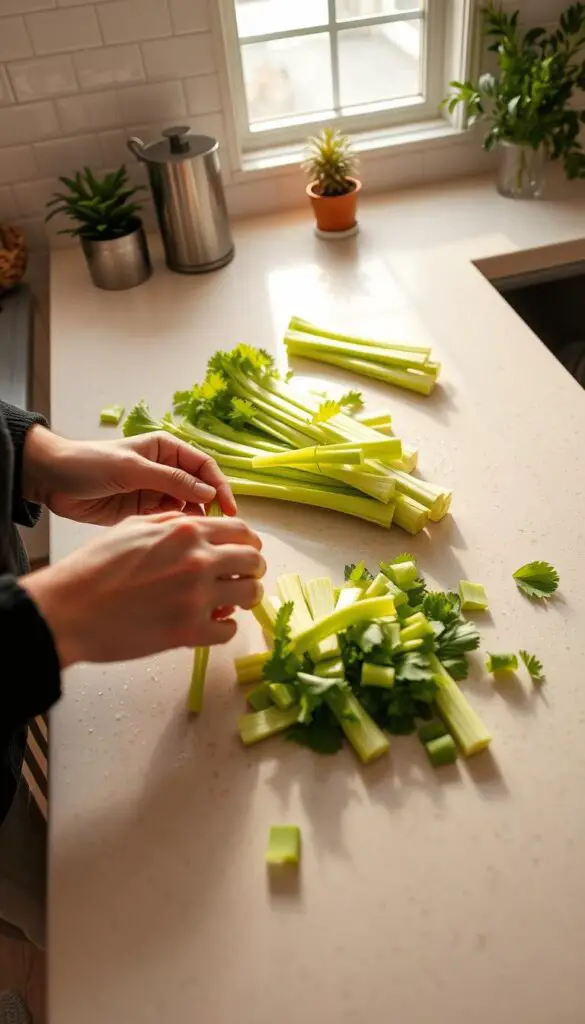
Keeping your furry friend safe starts with smart food prep techniques. Fresh veggies need careful handling to maximize benefits while minimizing risks. Let’s break down the best practices for turning celery into a crunchy, pet-approved snack.
Chopping Celery for Safety
Always rinse celery under cool water to remove dirt or chemicals. Cut stalks into pea-sized chunks—this prevents choking and helps tiny mouths manage the fibrous texture. Remove tough strings running along the veggie’s length, as these can tangle around teeth or cause blockages.
| Prep Step | Purpose | Tool Tip |
|---|---|---|
| Washing | Eliminates pesticides | Use vegetable brush |
| De-stringing | Reduces choking risk | Peeler or paring knife |
| Chopping | Easier digestion | Sharp kitchen shears |
Pair 1-2 bite-sized pieces with leafy greens for variety. “Small portions let pets enjoy flavors without overloading their systems,” advises Dr. Lisa Nguyen, a veterinary nutritionist.
Why Raw Celery is Best
Cooked veggies lose up to 50% of vitamin C during heating—a dealbreaker for animals needing this nutrient daily. Raw celery retains its crunch, helping wear down ever-growing teeth naturally. The high water content also supports hydration during warmer months.
Make sure to discard uneaten portions within 4 hours. This prevents bacterial growth while keeping mealtimes fresh and appealing. Rotate celery with other vitamin-packed veggies like bell peppers for balanced nibbling.
Nutritional Benefits and Key Vitamins in Celery
Understanding the science behind your pet’s snacks helps optimize their health. Celery’s crisp texture isn’t just satisfying—it delivers three powerhouse nutrients that address specific biological needs. Let’s explore how each component supports your companion’s well-being.
Vitamin A, C, and K Explained
Vitamin A acts like a bodyguard for eyesight and organ function. “Without it, pets become vulnerable to infections,” explains Dr. Rachel Kim, an exotic animal vet. This nutrient keeps skin healthy and boosts their defense system against illnesses.
Vitamin C can’t be stored or produced naturally by these small herbivores. A single celery stalk offers 3% of their daily needs, helping prevent scurvy—a condition causing joint pain and fatigue. Pair it with bell peppers for a vitamin-packed combo.
| Vitamin | Key Benefit | Daily Impact |
|---|---|---|
| A | Eye & immune health | Supports night vision |
| C | Scurvy prevention | Boosts wound healing |
| K | Blood clotting | Strengthens bones |
Fiber and Hydration Advantages
The crunchy veggie’s natural fiber keeps digestion smooth. It promotes good gut bacteria while preventing bloating—a common issue in small pets. Combine celery with low-calcium greens like lettuce for balanced meals.
With 95% water content, this snack acts as a hydration helper. It’s perfect for encouraging water intake during summer or for pets reluctant to drink from bottles. Just remember—moderation prevents watery stools!
Potential Risks When Feeding Celery
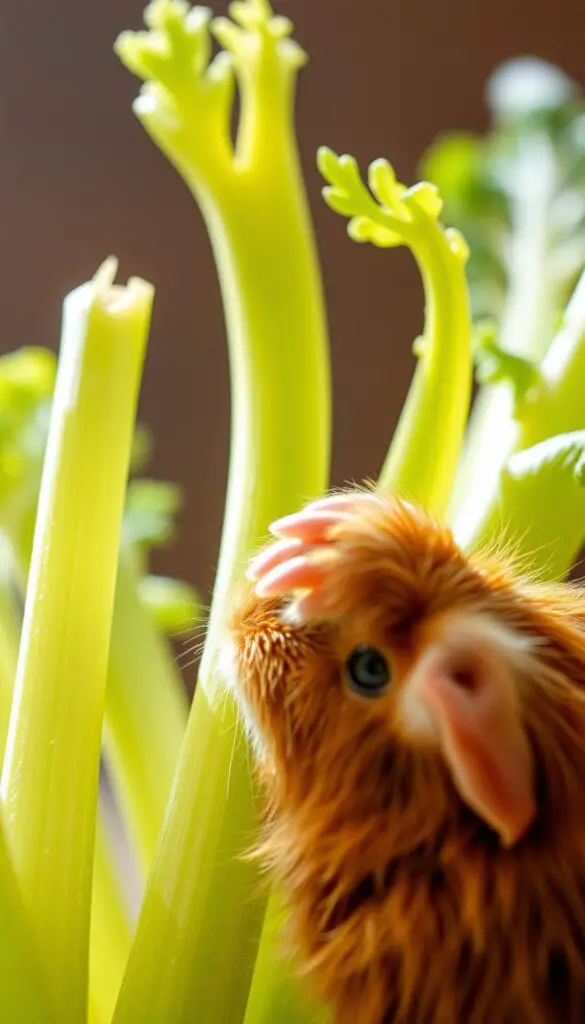
While celery offers nutritional perks, mindful feeding prevents health hiccups. Two key concerns demand attention—mineral buildup and fibrous textures—but smart handling keeps snacks safe.
Mineral Buildup and Urinary Health
Celery contains oxalates that bind with calcium, potentially forming bladder stones. These painful deposits affect 1 in 5 small pets, according to veterinary studies. Animals with prior urinary issues need extra caution—limit portions to thumbnail-sized pieces twice weekly.
Rotate high-calcium greens with low-oxalate options like rosemary for balance. “Prevention beats treatment,” says Dr. Sarah Miller, a rodent health specialist. Regular water intake flushes minerals, so always provide fresh bottles.
Managing Fibrous Textures
Those signature strings in celery stalks? They’re nature’s dental floss but pose risks. Long strands can wrap around molars or lodge in throats. A quick fix: peel stalks with a veggie peeler before chopping.
- Wash leaves and stems thoroughly
- Slice into pinky-nail-sized bits
- Discard tough central ribs
Watch for enthusiastic chewing—some pets gulp food without proper grinding. Pair celery with softer veggies like cucumber to slow mealtimes. With simple prep steps, you’ll turn risks into rewarding crunch sessions!
Balancing Celery with a Guinea Pig’s Diet
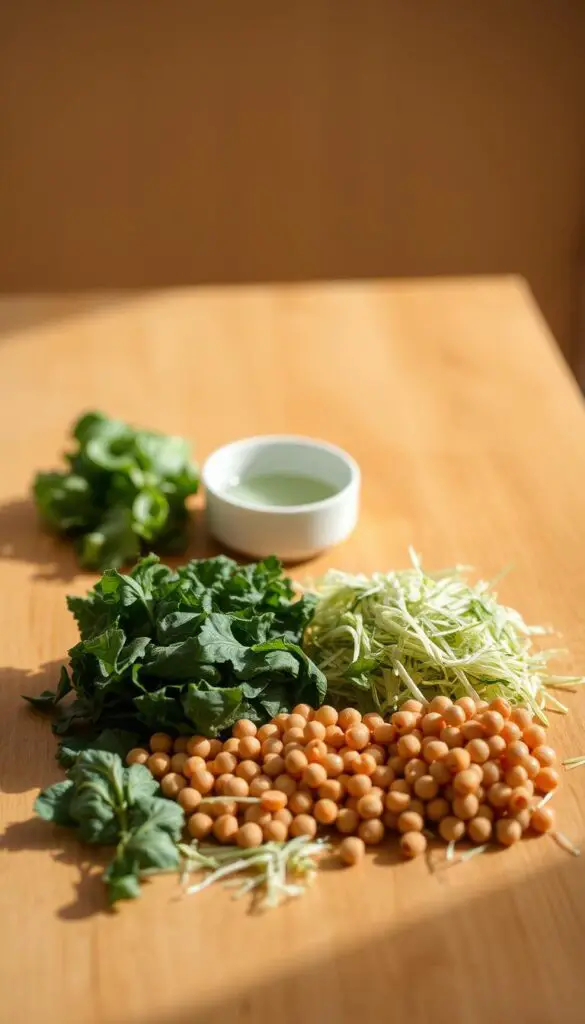
Creating a nutritious menu for small pets requires precision. While fresh greens add excitement, their quantities must align with specific biological needs. Let’s explore how to maintain harmony between treats and staples.
Smart Scheduling for Crunchy Treats
Nutritionists suggest 1-2 bite-sized pieces twice weekly—about 4 grams daily. This equals a 2-inch stalk segment with a few leaves. Overfeeding risks mineral imbalances, while underfeeding misses nutritional opportunities.
| Metric | Recommendation |
|---|---|
| Daily Max | 4 grams |
| Weekly Frequency | 2 sessions |
| Ideal Size | 2-inch piece |
Pair celery with hay-based meals for optimal digestion. “Treats should enhance, not dominate, their plate,” advises Dr. Angela Harris, a small-animal dietary expert. Rotate with bell peppers or zucchini to keep meals engaging.
Your pet’s daily intake should prioritize:
- Unlimited timothy hay
- Fortified pellets (1/8 cup)
- Mixed veggies (1 cup total)
Reserve celery for Tuesday and Friday snacks, for example. This pattern prevents oxalate buildup while delivering vitamins safely. Track reactions—enthusiastic nibbles mean you’ve nailed the balance!
Integrating Celery into a Variety of Vegetables
Building a colorful plate for your furry companion does more than please their eyes—it ensures they get diverse nutrients essential for their health. Pairing celery with other fresh options creates meals that support digestion, immunity, and overall vitality.
Building Nutritional Harmony
Rotate these veggie groups to keep meals exciting and balanced:
| Category | Top Picks | Key Benefits |
|---|---|---|
| Leafy Greens | Romaine lettuce, kale | High in fiber & calcium |
| Crunchy Veggies | Bell peppers, zucchini | Vitamin C boost |
| Herbs | Cilantro, basil | Digestive support |
Bell peppers shine as vitamin C champions, delivering 3x more per ounce than celery. Combine thin slices with chopped leaves for a nutrient-packed duo. Herbs like parsley add flavor while aiding digestion—try sprinkling fresh sprigs over their hay.
“Aim for 2-3 veggie types daily,” suggests Dr. Angela Harris. Sample rotation:
- Monday: Celery + red pepper + cilantro
- Wednesday: Carrot tops + zucchini + mint
- Friday: Spring greens + tomato + basil
Always introduce new items gradually. Watch for enthusiastic nibbles on sweet potatoes or broccoli florets—these occasional treats add excitement while maintaining nutritional balance.
Understanding Overall Guinea Pig Nutritional Needs
Crafting the perfect meal plan for your furry companion starts with understanding their core dietary needs. A balanced approach supports digestion, energy levels, and long-term health.
The Foundation of Daily Meals
Hay forms 80-85% of their ideal intake—always keep it fresh and unlimited. This fibrous staple wears down teeth naturally and keeps their gut moving smoothly. Choose timothy or orchard varieties for optimal nutrition.
Fortified pellets provide concentrated vitamins like C, which their bodies can’t produce. Offer ⅛ cup daily alongside leafy greens. Rotate veggies like bell peppers and zucchini for variety while avoiding calcium-heavy options.
Remember: treats should never replace hay as the main food source. Pair crunchy snacks with plenty of water to support urinary health. Your pet’s vibrant energy and shiny coat will show when their diet hits the sweet spot!

